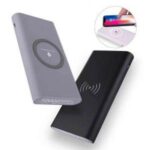When you think about your personal brand, have you considered how your wine labels can communicate your story? Custom labels offer a unique opportunity to showcase your identity through design elements like typography and color. They don’t just sit on a shelf; they engage consumers on an emotional level and foster loyalty. As you explore what makes your brand distinct, you might find that effective label design is more than an aesthetic choice—it’s a strategic move that could transform your approach in the market. What key elements will you choose to represent your vision?
Importance of Personal Branding
Personal branding is often crucial for standing out in today’s competitive market. When you create your own wine labels, you’re not just selling a product; you’re sharing a piece of who you are. Your personal brand communicates your values, style, and passion, making it easier for customers to connect with you on a deeper level.
By investing in a strong personal brand, you’ll differentiate yourself from countless others in the wine industry. Think of your label as a visual representation of your story, one that invites customers to engage with your unique journey. This connection can lead to loyalty, encouraging customers to choose your wines over others.
Moreover, a well-crafted personal brand can enhance your credibility. As people begin to recognize your name and associate it with quality, they’re more likely to recommend your products. This word-of-mouth marketing can be invaluable and is often more effective than traditional advertising.
In essence, personal branding isn’t just about aesthetics; it’s about building relationships and trust.
Elements of Wine Label Design
Creating a memorable wine label involves several key elements that reflect your personal brand and captivate potential customers.
First, focus on the typography. Choose fonts that resonate with your brand’s personality—whether elegant, bold, or playful. Your font should be clear and easy to read, even from a distance.
Next, consider color schemes. Colors evoke emotions and can influence purchasing decisions. Think about what colors align with your brand’s story. For instance, earthy tones might convey a rustic charm, while bright colors could signal a modern twist.
Imagery plays a significant role too. Use visuals that tell a story about your wine or its origin. Whether it’s a logo, an illustration, or a photograph, ensure it’s high quality and complements your overall design.
Don’t make your own beer labels get the label’s shape and size. Unconventional shapes can stand out on shelves, making your wine easily recognizable.
Lastly, include essential information—like the wine type, vintage, and alcohol content—without overcrowding the design. Balance is key!
Tools for Creating Custom Labels
Designing custom wine labels has never been easier, thanks to a variety of user-friendly tools available today. Whether you’re a novice or a seasoned designer, these tools cater to all skill levels and can help you create stunning labels that reflect your personal style.
One popular option is Canva, which offers customizable templates specifically for wine labels. You can easily drag and drop elements, adjust colors, and add your own text.
Another great choice is Adobe Spark, where you can create professional-looking labels with minimal effort. It includes a library of design assets to enhance your creativity.
For those who prefer more specialized software, consider using Maestro Label Designer. This tool is tailored for label creation, allowing precise control over dimensions and layout.
Additionally, online platforms like Vistaprint provide printing services alongside design tools, making it convenient to bring your creations to life.
Lastly, if you’re looking for something more hands-on, try using label-making kits available in craft stores. These kits often come with everything you need to design and print your labels at home.
With these tools at your fingertips, you’ll be well on your way to designing eye-catching custom wine labels!
Tips for Effective Label Marketing
When it comes to effective label marketing, understanding your audience is key. You need to know who your customers are and what they value. Are they looking for luxury, sustainability, or a fun experience? Tailor your labels to speak directly to those preferences.
Next, focus on visual appeal. Use colors, fonts, and imagery that resonate with your target market. A vibrant label might attract a younger crowd, while a more muted, elegant design could appeal to a sophisticated audience.
Make sure your design stands out on the shelf, catching the eye of potential buyers.
Don’t forget about storytelling. Your label should convey a narrative about your wine’s origin or unique qualities. This connection can create an emotional bond with consumers, encouraging them to choose your product over others.
Lastly, consider social media. Share images of your labels and the stories behind them on platforms like Instagram or Facebook. Engage with your audience by asking for their feedback or running contests that involve your label.
Effective label marketing isn’t just about aesthetics; it’s about creating a memorable experience that resonates with your customers.
Showcasing Your Unique Style
Your wine label is a canvas where you can showcase your unique style and personality. It’s not just about the wine; it’s about creating a memorable experience that reflects who you are.
To help you design a label that stands out, consider these four elements:
- Color Palette: Choose colors that resonate with your brand. Bold hues can convey excitement, while muted tones might evoke elegance.
- Typography: Select fonts that align with your personality. A modern sans-serif can indicate a contemporary vibe, while classic serif fonts might suggest tradition.
- Imagery: Incorporate images or illustrations that reflect your story. Whether it’s a family crest or an abstract design, visuals can enhance your label’s narrative.
- Personal Touch: Think about adding a handwritten signature or a personal message. This small detail can create a connection with your audience, making your wine feel more special.
Conclusion
Designing your own wine labels is a fantastic way to boost your personal brand. By incorporating your story, values, and unique style into your labels, you’ll create a memorable experience for your customers. Use the right colors, typography, and imagery to resonate with your audience and stand out in a crowded market. With thoughtful design and effective marketing, you can foster loyalty and spark conversations about your brand. So, get creative and make your labels truly yours!





